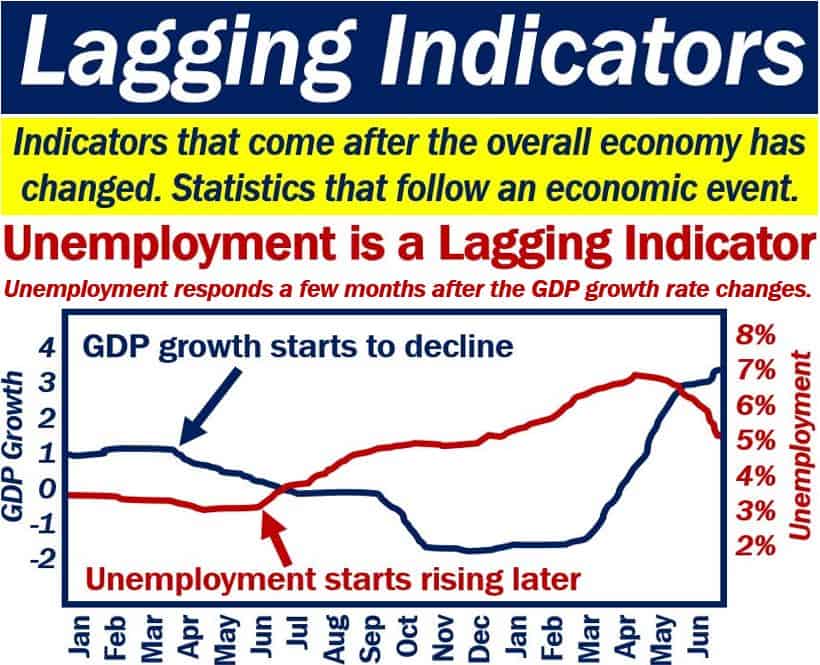Lagging indicators – definition and meaning
Lagging indicators are financial market and economic indicators which change after the overall economy has already changed. These measurable economic factors may also change after the economy has been following a particular trend or pattern. Sometimes, lagging indicators are technical indicators that trail price actions of specific underlying assets.
These indicators typically lag from four to six months behind the overall economic cycle. In other words, they are not coincident or leading indicators.
Coincident indicators move together with the overall economic cycle while leading indicators move ahead of it.
Traders and merchants use lagging indicators to determine how strong or weak a specific trend is.
To recap, there are three types of indicators.
1. Those which move in tandem with the overall economy, i.e., coincident indicators.
2. Indicators which move ahead of the overall economy, i.e., leading indicators.
3. And those which trail the overall economy usually by about six months, i.e., lagging indicators.
Thebalance.com says the following regarding the term:
“Lagging indicators are statistics that follow an economic event. You use them to confirm what has recently happened in the economy and establish a trend.”
“That makes them especially useful for identify turning points in the business cycle.”

How to use lagging indicators
It is best to use lagging indicators in conjunction with coincident and leading indicators.
Leading indicators
Leading indicators include manufacturers’ orders for durable goods, interest rates, and stock prices. They tell us what new phases are coming in the business cycle.
Coincident indicators
Coincident indicators include industrial production, personal income, retail sales, and GDP growth. GDP stands for Gross Domestic Product. These indicators tell us what is occurring at this very moment.
Lagging indicators
The book value of business inventories, unit labor costs, and business spending, for example, are lagging indicators. Lagging indicators also include outstanding consumer loans and outstanding business loans.
The stock performance of businesses that transport goods is a lagging indicator. As soon as manufacturers have to fill orders for durable goods, they must deliver them.
In the US, the Dow Jones Transportation Average tells us how stocks of companies that ship goods are doing.
When people start losing their jobs, we know that the economy is contracting. However, job losses start a few months after the economy starts declining. That is why unemployment is a lagging indicator.
Sometimes, even when the economy starts growing well again, unemployment may continue rising for a while.
Most countries have a Consumer Confidence Index. It tells us how consumers are feeling, i.e., it is an indicator of consumer sentiment. The Consumer Confidence Index is a lagging indicator.
Most of us base our confidence on how easy or hard it is to find a job. Finding a job does not start getting more difficult as soon as GDP starts contracting. There is an interval of a few months.
Video – leading and lagging indicators
This Mint video talks about two types of economic indicators – lagging and leading indicators.

